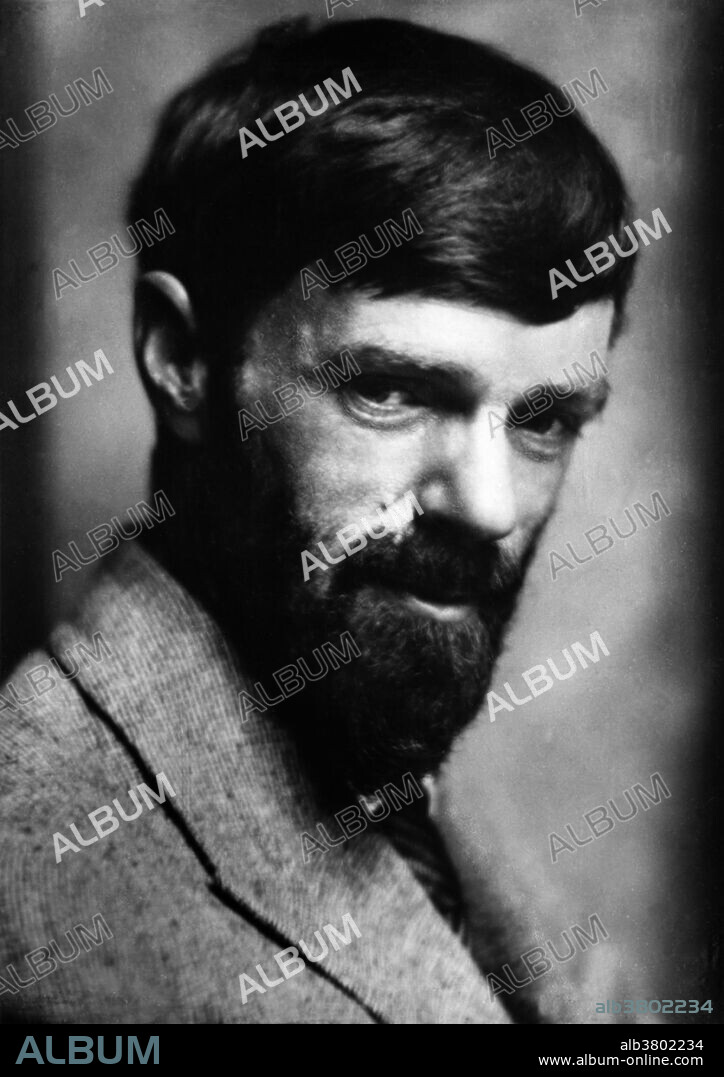alb3802234
D. H. Lawrence, English Author

|
Add to another lightbox |
|
Add to another lightbox |



Buy this image.
Select the use:

Title:
D. H. Lawrence, English Author
Caption:
David Herbert Richards Lawrence (September 11, 1885 - March 2, 1930) was an English novelist, poet, playwright, essayist, literary critic and painter who published as D. H. Lawrence. His collected works, among other things, represent an extended reflection upon the dehumanising effects of modernity and industrialisation. In them, some of the issues Lawrence explores are emotional health, vitality, spontaneity and instinct. His opinions earned him many enemies and he endured official persecution, censorship, and misrepresentation of his creative work throughout the second half of his life, much of which he spent in a voluntary exile. He had a lifelong interest in painting, which became one of his main forms of expression in his last years. His paintings were exhibited at the Warren Gallery in London's Mayfair in 1929. The exhibition was extremely controversial, with many of the 13,000 people visiting mainly to gawk. After a complaint, the police seized 13 of the 25 paintings. He was able to recover his paintings only by agreeing never to exhibit them in England again. At the time of his death, his public reputation was that of a pornographer who had wasted his considerable talents. E. M. Forster, in an obituary notice, challenged this widely held view, describing him as, "The greatest imaginative novelist of our generation." He died in 1930, at the age of 44, from complications of tuberculosis. No photographer credited, undated.
Category:
people • Historical & Fine Arts • black & white
Credit:
Album / Science Source / Sylvia Beach Collection, Princeton
Releases:
Image size:
3508 x 4963 px | 49.8 MB
Print size:
29.7 x 42.0 cm | 11.7 x 16.5 in (300 dpi)
Keywords:
1885 • 1930 • 20 20TH XX XXTH TWENTIETH CENTURY • 20 XX TWENTIETH CENTURY • 20TH CENTURY • 20TH • ARTIST • ARTISTE • AUTHOR • BLACK & WHITE • BW • CELEBRITIES • CELEBRITY • CONTROVERSIAL • D. H. LAWRENCE • DAVID HERBERT LAWRENCE • DAVID HERBERT RICHARDS LAWRENCE • DH LAWRENCE • ENGLISH • ESSAYIST • EUROPEA • EUROPEAN • EUROPEANS • FAMOUS PEOPLE • FAMOUS • FICTION • FIGURE • HISTORIC • HISTORICAL & FINE ARTS • HISTORICAL • HISTORY • IMPORTANT • INFLUENTIAL • LAWRENCE • LITERARY CRITIC • LITERARY • LITERATURE • MALE • MAN • MEN • NON-FICTION • NOTABLE • NOVELIST • PAINTER • PEOPLE • PERSON • PERSONALITIES • PERSONALITY • PHOTO • PHOTOGRAPH • PLAYWRIGHT • POET • TWENTIETH CENTURY • WELL-KNOWN • WESTERN LITERATURE


 Pinterest
Pinterest Twitter
Twitter Facebook
Facebook Copy link
Copy link Email
Email
